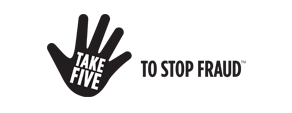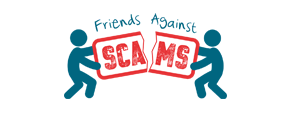Digital Pickpockets: How to Keep Your Wallet Safe in the Age of Mobile Payments
Picture this:
You’re queuing for your morning coffee. You pull out your phone, double-tap, and pay in a second. Easy.
But across town, someone else is doing the same thing… with your card details.
This is digital pickpocketing, where criminals don’t need to reach into your pocket, they just need to sneak your card details onto their own Apple Pay, Google Pay, or another mobile wallet. Once they’ve done that, every tap is money straight out of your account.
Scary? Absolutely. But the good news is there are simple steps you can take to stop them in their tracks.

What Exactly Is a Digital Pickpocket?
In the old days, a pickpocket would swipe your wallet. Today, they don’t bother with the wallet at all. Instead, they:
- Steal your card details (via skimming machines, phishing scams, or data leaks).
- Add them to their own phone wallet.
- Start making unlimited contactless purchases before you’ve even realised.
And because mobile wallets are so widely accepted with no limitations, fraudsters can spend big, fast.
How Do They Get Your Details?
Digital pickpockets are crafty, but their tricks often look familiar:
- Skimming devices hidden in ATMs or petrol pumps steal card info.
- Data breaches put millions of card numbers up for sale on the dark web.
- Phishing scams trick you into “confirming” your card or bank details.
- Verification code scams: fraudsters pose as your bank, asking you to read out the one-time code needed to add your card to their wallet.
One slip is all it takes.
Signs You’ve Been Digitally Pickpocketed
Not sure if you’ve been hit? Look out for:
- Apple Pay or Google Pay notifications you didn’t set up.
- Payments on your statement that you don’t recognise.
- Bank messages about “new device added to wallet.”
- Your real card suddenly getting declined while charges still appear.
Spotting these early can save you hundreds.

How to Protect Yourself
The best defence is a few smart habits:
- Turn on instant bank alerts – every time a payment is made, you’ll know.
- Keep strong authentication – use Face ID, fingerprint, or PIN, not just swipe-to-unlock.
- Never share one-time codes – your bank will never ask for them by phone or text.
- Update your phone regularly – security patches keep hackers out.
- Check your statements weekly – small frauds often start as a “test” transaction.
Think of it like checking your front door is locked, just part of keeping safe.
How Phonely Helps You Stay Safe
Many digital pickpocket attempts don’t start with stolen machines or data leaks — they start with a simple phone call or text. A scammer poses as your bank, your provider, or even a delivery company, all to trick you into handing over one-time codes or personal details. Once they have those, adding your card to their mobile wallet is quick and easy.
That’s where Phonely’s CallGuard steps in.
- Automatic scam blocking – suspicious and known scam numbers are blocked before they reach you.
- Built-in anti-fraud introductions – This message will be played to callers before they’re connected to you. It’s designed to discourage malicious calls and give you the confidence to answer the phone.
- Call recording – lets you review any calls you’re unsure about and share with your bank if needed.
It’s like having a digital bodyguard for your phone line. By cutting off scam calls at the source, Phonely helps stop fraudsters from ever getting close to your card details in the first place. Phonely’s home landline service is fed real-time data from our own Who Call’s Me page which allows uses to report scams and fraud.
What If It Happens to You?
First off, don’t panic—it happens to smart people too. Here’s what to do:
- Call your bank immediately by dialling 159 from your mobile or landline and freeze the card.
- Ask them to remove your card from any suspicious wallets.
- Request a new card and monitor your accounts.
- Report the fraud so you’re refunded.
- Update your account passwords (especially email and banking).
Speed matters here—the faster you act, the less damage they can do.
Staying One Step Ahead
Banks are working hard on fraud detection, but the first line of defence is always you. Awareness is your shield. And tools like Phonely’s CallGuard add an extra layer of protection by blocking scam calls that often kick off these fraud attempts.
Digital pickpockets are clever, but they’re not invincible. A little vigilance goes a long way.

Final Thoughts
Your phone wallet is as personal as your real one. Protect it with the same care.
Digital pickpockets may never reach into your jeans, but they’ll happily reach into your account. Don’t make it easy for them.
👉 Stay alert, share this guide with family (especially those less tech-savvy), and explore Phonely to stop scammers before they get the chance.
Because in the digital age, protecting your wallet starts with protecting your phone.









